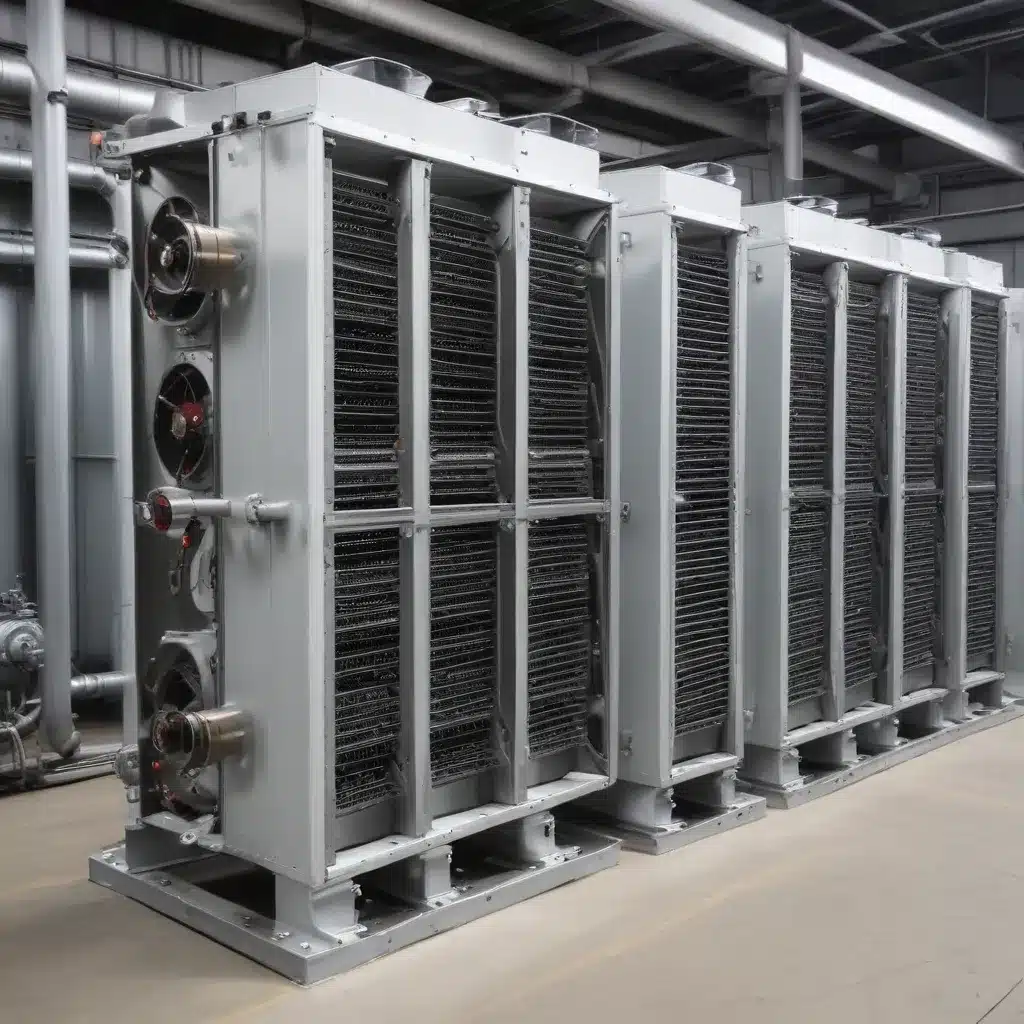
Understanding the Importance of Air-Cooled Heat Exchangers in Waste Heat Recovery
In the ever-evolving landscape of the electronics and IT industries, the need for efficient energy management has become paramount. One of the critical components in this pursuit is the air-cooled heat exchanger, a versatile and highly effective tool for waste heat recovery and energy savings.
Air-cooled heat exchangers play a vital role in numerous industrial processes, from data centers and server rooms to manufacturing facilities and power generation plants. By capturing and repurposing the heat generated by these systems, air-cooled heat exchangers can significantly reduce energy consumption, lower operating costs, and contribute to a more sustainable future.
Optimizing Air-Cooled Heat Exchanger Design and Performance
The key to unlocking the full potential of air-cooled heat exchangers lies in understanding the intricacies of their design and engineering. Factors such as heat transfer coefficients, airflow patterns, and material selection all contribute to the overall efficiency of these systems.
Enhancing Heat Transfer Coefficients
One of the primary ways to improve air-cooled heat exchanger efficiency is by optimizing the heat transfer coefficients. This can be achieved through the implementation of advanced fin designs, such as louvered or wavy fins, which increase the surface area and turbulence of the airflow, leading to enhanced heat transfer. Additionally, the use of high-performance materials, like aluminum or copper, can further improve the heat transfer capabilities of the exchanger.
Optimizing Airflow Patterns
Careful consideration of the airflow patterns within the heat exchanger is essential for maximizing its performance. Strategies such as implementing baffles, adjusting fan speeds, and streamlining the air inlet and outlet design can help to ensure optimal airflow, minimizing pressure drops and improving heat transfer.
Leveraging Thermal-Hydraulic Modeling
The integration of advanced thermal-hydraulic modeling techniques can provide valuable insights into the behavior of air-cooled heat exchangers under various operating conditions. These simulation tools can help engineers and designers optimize the exchanger’s geometry, airflow, and heat transfer characteristics, leading to significant improvements in overall efficiency.
Maintenance and Troubleshooting for Sustained Performance
Maintaining the peak performance of air-cooled heat exchangers requires a proactive and systematic approach to maintenance and troubleshooting. Regular inspections, cleaning, and preventive maintenance can help ensure the exchanger’s continued efficiency and reliability.
Monitoring and Preventive Maintenance
Consistent monitoring of key performance indicators, such as temperature differentials, pressure drops, and airflow rates, can help identify potential issues before they become major problems. Regularly scheduled maintenance, including cleaning of the heat transfer surfaces and inspecting the mechanical components, can help maintain optimal operating conditions.
Troubleshooting Common Issues
Air-cooled heat exchangers may face a variety of challenges, including fouling, corrosion, and mechanical failures. Developing a thorough understanding of these common issues and implementing effective troubleshooting strategies can help mitigate downtime and ensure continued reliable operation.
Leveraging Air-Cooled Heat Exchangers for Waste Heat Recovery in the Electronics and IT Industries
The electronics and IT industries are particularly well-suited for the implementation of air-cooled heat exchangers in waste heat recovery efforts. These industries generate significant amounts of waste heat, which can be effectively captured and repurposed to enhance energy efficiency and reduce environmental impact.
Data Centers and Server Rooms
Data centers and server rooms are prime candidates for the integration of air-cooled heat exchangers. The heat generated by the high-density computing equipment can be captured and used to heat nearby buildings, power absorption chillers, or even generate steam for industrial processes.
Manufacturing Facilities
In the manufacturing sector, air-cooled heat exchangers can be employed to recover waste heat from various industrial processes, such as furnaces, ovens, and process equipment. This recovered heat can then be used to preheat combustion air, generate steam, or provide space heating, resulting in substantial energy savings and reduced greenhouse gas emissions.
Power Generation Plants
Air-cooled heat exchangers play a crucial role in power generation plants, capturing waste heat from turbines, engines, and other energy-intensive equipment. By repurposing this heat, these systems can enhance overall plant efficiency and reduce the reliance on fossil fuels, contributing to a more sustainable energy landscape.
Embracing the Future of Air-Cooled Heat Exchangers
As the demand for energy efficiency and sustainability continues to grow, the importance of air-cooled heat exchangers in the electronics and IT industries cannot be overstated. By understanding the intricacies of their design, optimizing their performance, and implementing effective maintenance practices, organizations can unlock the full potential of these versatile and powerful systems.
Through the strategic deployment of air-cooled heat exchangers, the electronics and IT industries can not only achieve significant energy savings but also contribute to a more sustainable future, paving the way for a greener and more efficient tomorrow. By embracing the future of air-cooled heat exchangers, these industries can lead the charge in waste heat recovery and energy efficiency, setting a shining example for others to follow.
Conclusion
Air-cooled heat exchangers are the unsung heroes of the electronics and IT industries, quietly working behind the scenes to capture and repurpose waste heat, driving energy savings and sustainability. By delving deeper into the design, engineering, and maintenance of these systems, industry professionals can unlock a wealth of opportunities for improved efficiency, cost savings, and environmental stewardship.
As the world continues to grapple with the challenges of energy consumption and environmental protection, the role of air-cooled heat exchangers will only become more crucial. By staying at the forefront of this technology and continuously seeking ways to enhance its performance, the electronics and IT industries can position themselves as leaders in the pursuit of a greener, more sustainable future. The future is bright for air-cooled heat exchangers, and those who embrace their potential will reap the rewards for years to come.

